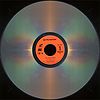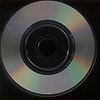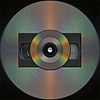Distro Distinction
From EHOL

On this website, you may have seen the different styles of recordings and may have wondered what each of them are. This is a small listing to talk about each of the formats.
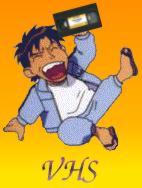
Today's Video cassette tape was developed in 1976 by JVC, it took until the 1980's to recognize this as the mainstream tape format (against the Sony Betamax and Phillips Video 2000). This is not one of the first formats of this kind, but it is still one of the oldest types available. Despite this, VHS' are well known for their availability - almost everyone has seen a VHS one time in their life. And the audio cassette tape is still used today as a reporter or college student's best friend. Video cassettes today are beginning to fall out of usage for the more preferable DVD format. This ancient technology reads the 1/2 inch magnetic tape by moving it along the reader head. The tapes have a 3 MegaHertz Bandwith and 240 lines of resolution, and are considered analog technology, compared to the now-standard digital technology of today. Despite the fact that much of the world has abandoned this format for VCDs and DVDs, the United States still held onto the format for years. In terms of getting a screenshot, the VHS format is not a good choice - the inherit mistakes are quite visible when a person takes one. The VHS format has a relatively short lifespan because of the direct contact.
From Wikipedia
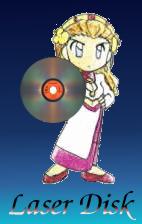
To put it simply, this is the record player of the optical disks (and probably the size of a LP record as well, being 12 inches across). Made in 1978, the system was always alongside with the final version of the VHS, and predates CDs by, at least, four years. The disks are gigantic, but the quality was well beyond even well-made VHS tapes. With many amenities like chapter skipping and forward/backward scanning, the ability to have Dolby Digital (AC-3, 5.1, DTS, THX, Pro Logic, and Surround), multiple languages, and even extras stored on the disks, these were truly yesteryear's DVD player. Because of the disks excessive size, the cases were usually adorned with nice covers. But they were also expensive. They also required the person to flip the disk around when they reached a certain point, which can cause frustration. The two different types of disks also had different recording times (60 minutes on CLV and 30 minutes on CAV) and each cost differently (CLV cost less to make than CAV). The El-Hazard disks were printed on CAV (I wonder why...), so the ability to still-frame is available, but the disks have to be flipped every 30 minutes. One interesting tidbit - some early LDs were so poorly made that they could suffer from Laser Rot - a condition that would react with oxygen inside the disk, causing the aluminum to oxidize, rendering the disk useless.
From the Laser Disk FAQ
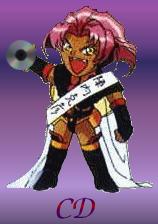
This is today's workhorse format. This format was developed and used in 1982, but it will not be mainstream until the early 1990's. With all of the enhancements of the Laser Disk and the ability to fit it all onto a smaller, more reasonable size, they have reached mainstream usage to the absolute extreme. With the ability to be used as storage (file backup), as a game media (the El-Hazard Sega Saturn version is the duly noted one on this site), as an audio media (many music CDs are abound here), and, to a lesser extent, as a video disk (called VCDs), there seems to be no end to the possible usage for these. They also seemed to have caused a stink with the music industry, but we will not go into this. The main purpose of this format is to be used as music media. With the optical enhancements, they have a long life span and they are somewhat scratch resistant (a small scratch will not hurt it too much, but a good-sized one renders it useless). With the advant of using computers, the CDs have also evolved to use their ability of storing beautiful audio and more memory for video games. There are special kinds of CDs, called CD-Rs and RW that gives a person greater flexibility by the ability to burn data and, with the RWs, to burn it constantly. It seems that this format will continue until a more practical format comes out.
From Wikipedia
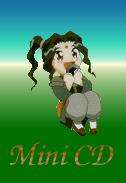
This is much like the standard CD, but with a few key differences. 1) It is smaller in size. Compared to the standard CD, these are kind of short in comparison. 2) They hold less memory. They can hold 185 MB in comparison to 650 to 700 MB (approximately). 3) They usually have a karaoke track. Many standard CDs usually do not have these tracks, but the Mini-CDs do. This makes them more valuable in that sort of way. They are purchasable, but are a bit more expensive due to their small size.
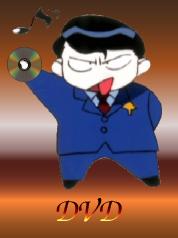
DVDs are today's choice disks for movies. They were created in 1995, but it will takes years before they become mainstream. With its large memory bank (4.7 GB to 18.8 GB possible) and its extensive encoding (usually MPEG-2), this seems to be the new format for this era (as of 2004). Taking all of the good about the LDs (crisp picture, beautiful scanning, sometimes down to the frame, multiple audio tracks) and removing the bad (the need to flip, the size, the cost to manufacture), this can overtake the original LD format and put it into a stranglehold. What is nice about the disk is that whole movies can be stored on it and they can have different languages interlaced in it (with available subtitles, graphics with clear backgrounds), and the picture is practically pristine quality, making beautiful screenshots without the mess of VHS or the inconvenience of LDs. What many companies have done is take their original movies on older formats, re-record them, burn them to DVDs, and sell them. Though this is not a bad practice, it should not be encouraged; it is preferrable if they actually enhance the movie to make it nicer than the copy. Furthermore, many of the DVDs, unlike other formats, have special encodings that prevent the disks from working outside their region (of course there are step-arounds, just not many LEGAL ones). The disks have been used much like CDs, including as game disks, storage disks, audio disks and movie disks, but their main purpose is movie disks. Many of the newest video game systems have used DVD formats.
From Wikipedia




